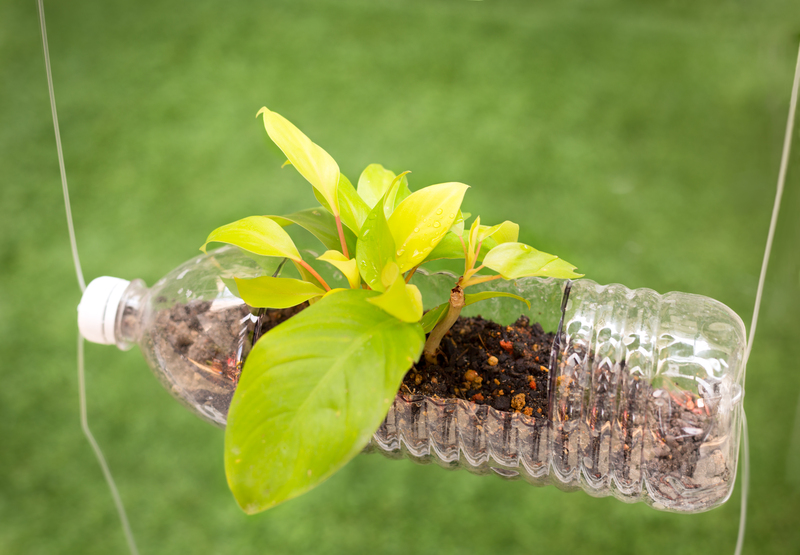Why Proper PPE Waste Disposal Matters for Our Health and Environment
As the world becomes increasingly conscious of hygiene and protection, especially in the wake of global pandemics, personal protective equipment (PPE) like masks, gloves, gowns, and face shields has become a staple in our daily lives. While these essential items protect us from infectious diseases and hazardous substances, they also generate massive amounts of waste. Proper PPE waste disposal is, therefore, critical--not just to maintain public health but also to safeguard our environment for future generations.
Understanding the Rise of PPE Waste
With millions using PPE daily in healthcare, public spaces, and workplaces, the surge in PPE waste is undeniable. According to environmental groups and health organizations, the improper disposal of masks and gloves is now a global challenge. It's estimated that 129 billion face masks are used every month worldwide, with the majority being single-use and non-biodegradable. This unprecedented consumption leads to a significant environmental burden.
- Healthcare Facilities: Hospitals and clinics have drastically increased their usage of disposable PPE.
- Public Spaces: Masks and gloves are commonly discarded on streets, in parks, and waterways.
- Workplaces: Offices and industries have mandated PPE use, further increasing waste streams.
With such massive production and use, the importance of proper PPE waste management cannot be overstated.

The Health Risks of Improper PPE Waste Disposal
Pathogen Transmission
Improperly discarded PPE can serve as a vector for viruses, bacteria, and other pathogens. Masks and gloves may be contaminated with infectious particles, and when left in public places, they increase the risk of community transmission.
- Healthcare Risk: Used PPE, especially from medical settings, may carry bloodborne pathogens.
- Pandemic Spread: Disposal in open bins or on the street can lead to the uncontrolled spread of illnesses such as COVID-19.
Public Nuisance and Occupational Hazards
Sanitation workers or regular citizens who come in contact with improperly disposed PPE are at risk of exposure to hazardous biological material. Children and animals may also become inadvertently exposed to contaminated PPE items on roadsides or playgrounds.
Environmental Health Impact
The environmental consequences of improper PPE disposal have direct and indirect effects on human health:
- Microplastics: Most PPE is made of plastics that degrade into microplastics, entering food chains.
- Wildlife Harm: Birds, fish, and animals mistake PPE for food or become entangled, leading to injury or death.
- Water Contamination: Rain and wind often carry PPE litter into storm drains, rivers, and oceans.
Environmental Impacts of PPE Waste
Persistent Pollutants
Most disposable PPE is made from non-biodegradable plastic polymers like polypropylene. This means that PPE litter can persist in the environment for decades to centuries before breaking down. The environmental issues associated with this include:
- Soil and Water Contamination: Chemicals released by degrading plastics can leach into soil and aquatic environments, disrupting ecosystems.
- Invasive Litter: Piles of masks and gloves can spoil natural landscapes and urban areas, affecting tourism and quality of life.
Wildlife Endangerment
Improperly discarded PPE has grave consequences for wildlife:
- Ingestion: Animals accidentally eat masks and gloves, mistaking them for food, which may lead to intestinal blockage or poisoning.
- Entanglement: Birds and marine creatures get trapped in PPE straps, hampering their movement and potentially causing fatalities.
Microplastic Proliferation
As PPE breaks down, it generates microplastics, which have been found in oceans, soil, air, and even drinking water. This widespread pollution poses risks to all terrestrial and aquatic life forms, and by extension--human health. Microplastics are known to accumulate toxins and travel through food webs, affecting a wide range of organisms.
The Importance of Proper PPE Waste Disposal
Proper PPE waste disposal isn't just about aesthetics or cleanliness; it's a matter of global responsibility. Here are several reasons why it matters:
- Reducing Disease Transmission: By ensuring that potentially contaminated PPE is safely disposed of, we decrease the risk of spreading pathogens to sanitation workers and the general public.
- Protecting the Environment: Sustainable PPE waste management strategies mitigate plastic pollution and preserve natural ecosystems.
- Safeguarding Wildlife: Responsible disposal reduces the risk of wildlife ingesting or becoming entangled in PPE waste.
- Enhancing Public Health: Clean environments mean lower transmission rates of diseases and overall healthier communities.
- Aligning with Environmental Regulations: Adhering to local, national, and international waste management guidelines can help avoid legal penalties and support global sustainability targets.
Best Practices for PPE Waste Management
Personal Responsibility
Every individual plays a role in minimizing the impact of PPE waste. Here's how you can help:
- Always dispose of PPE in a proper waste bin. Do not litter masks or gloves in public places.
- Cut the ear loops of masks before disposal to prevent wildlife entanglement.
- If you are sick or caring for someone ill, double-bag used PPE before disposal and wash your hands immediately.
- Encourage others to follow proper waste disposal habits.
Institutional and Workplace Guidelines
Organizations and agencies can implement policies and infrastructure to manage PPE waste responsibly:
- Separate PPE Bins: Provide clearly marked containers for PPE waste, especially in high-traffic or high-risk areas.
- Regular Collection and Disposal: Ensure PPE bins are emptied frequently by trained personnel using safe handling procedures.
- Awareness Campaigns: Conduct regular educational sessions about the importance of proper PPE disposal.
Innovative Disposal and Recycling Solutions
While recycling single-use PPE presents challenges due to contamination and material complexity, advancements are being made. Some solutions include:
- Dedicated PPE recycling programs that collect used PPE for processing and transformation into other products.
- Technological innovations that enable the safe breakdown or repurposing of PPE plastics.
- Biodegradable PPE items that decompose naturally, minimizing environmental impact.
Regulatory Frameworks Governing PPE Disposal
Proper PPE waste management is reinforced by governmental and international regulations:
- World Health Organization (WHO): Provides comprehensive guidelines for the safe collection, storage, and disposal of infectious PPE waste.
- US Environmental Protection Agency (EPA): Mandates procedures for the handling of hazardous medical and industrial PPE waste streams.
- Local and National Waste Laws: Encourage citizens to separate medical waste from household garbage and follow specific disposal instructions.
It is essential for organizations and individuals to stay informed and comply with these regulations to ensure safe, legal, and environmentally friendly PPE disposal.
Challenges in PPE Waste Disposal
Despite the need for proper PPE disposal, several challenges hinder global progress:
- Lack of Infrastructure: Many communities lack specialized PPE waste bins or collection mechanisms, leading to improper disposal.
- PPE Contamination: Used PPE may be classified as hazardous, making it difficult or unsafe to recycle.
- Limited Public Awareness: Not everyone understands the risks associated with PPE litter or how to dispose of it correctly.
- Economic Constraints: Implementing proper PPE waste disposal systems can be costly for low-income regions.
Addressing These Challenges
Solving the PPE waste problem requires a multi-faceted approach:
- Strengthen public education about PPE waste risks and disposal methods.
- Foster partnerships between governments, NGOs, and private sectors for waste management solutions.
- Invest in infrastructure and innovative technology for safer, more efficient PPE processing.
Sustainable Alternatives to Traditional PPE
One way to reduce PPE waste is to transition towards sustainable, reusable, and biodegradable PPE options. Here are some alternatives:
- Reusable Cloth Masks: Offer effective protection for non-medical settings and can be washed and reused.
- Biodegradable PPE: Products made from materials such as bio-plastics or plant fibers minimize long-term environmental impact.
- Innovative Designs: Companies are developing PPE that is both protective and eco-friendly, without compromising on safety standards.
How to Advocate for Better PPE Waste Management
As conscious citizens, you can champion the cause for improved PPE waste disposal:
- Support local and national policies prioritizing waste management and environmental protection.
- Participate in community clean-ups to remove discarded PPE from public areas.
- Educate peers about the importance of proper PPE waste disposal for health and environmental benefit.
- Demand accountability from organizations, institutions, and policy makers regarding sustainable waste practices.

Conclusion: Every Action Counts
Proper PPE waste disposal is crucial for protecting both our health and our environment. As PPE remains essential to public safety, our responsibility extends beyond using it to disposing of it correctly. By choosing proper disposal, supporting sustainable options, and advocating for system-wide changes, we can mitigate the negative impact of PPE waste.
Together, through individual effort and collective action, we can ensure our communities remain safe, clean, and healthy--today and for generations to come.
Frequently Asked Questions about PPE Waste Disposal
-
Q: Why is proper PPE waste disposal important for health?
A: It reduces the risk of pathogen transmission and protects sanitation workers, the general public, and wildlife from exposure to harmful contaminants. -
Q: What are the environmental consequences of improper PPE disposal?
A: PPE waste contributes to soil and water pollution, microplastic proliferation, and can harm wildlife through ingestion or entanglement. -
Q: Can PPE be recycled?
A: Some PPE is recyclable if uncontaminated, but most municipal systems are not yet equipped for this. Initiatives for PPE recycling are growing, especially for healthcare and workplace waste streams. -
Q: What role do regulations play?
A: Regulatory frameworks from organizations like WHO and EPA ensure PPE waste is disposed of safely and responsibly, minimizing risks to both health and environment.
Join the movement for safer, cleaner communities by committing to proper PPE waste disposal today!
